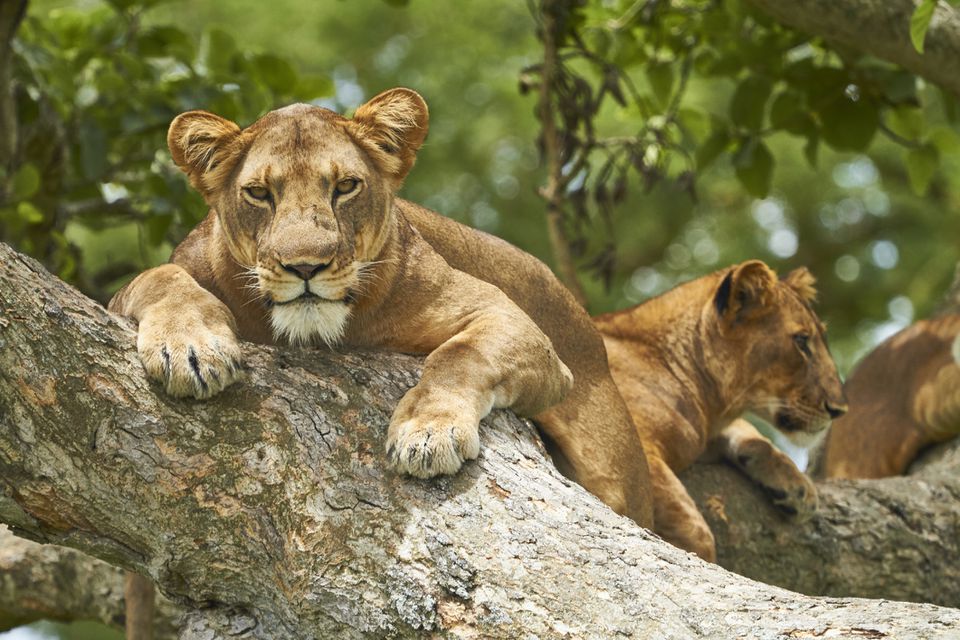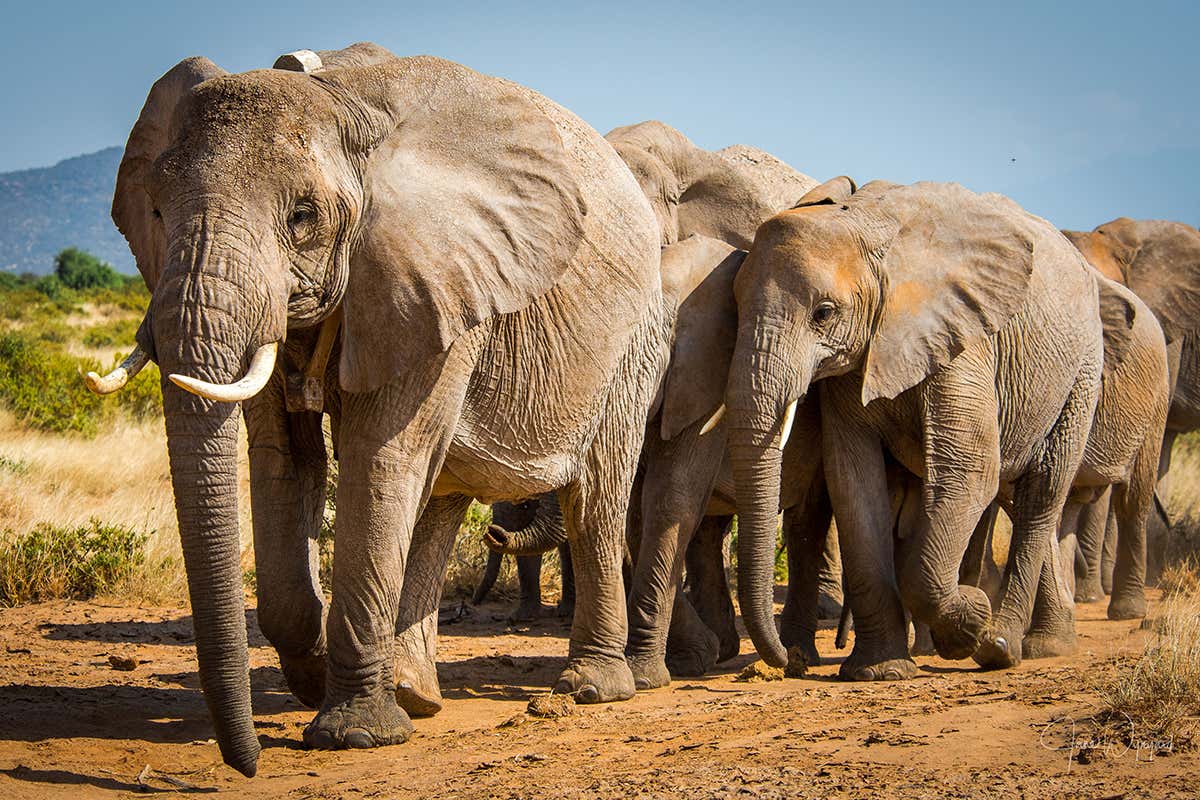Lion spotting is a major highlight for Ugandan safaris, second only to tracking the magnificent mountain gorillas. Three national parks offer prime opportunities to see these majestic predators:
Queen Elizabeth National Park: Home to the famous Ishasha tree-climbing lions, a sight unique to this area.
Murchison Falls National Park: Keep an eye out for the park’s well-known three-legged lion.
Kidepo Valley National Park: This off-the-beaten-path park boasts an abundance of lions thriving in a less-disturbed environment.
Here are 5 Facts about Lions
The lioness is the pride’s primary hunter.
Their leaner bodies and agility make them more adept at stalking and chasing prey than the bulkier males. A lioness typically needs around 5 kilograms of meat daily, while a male lion requires about 7 kilograms.
Despite their hunting prowess, lionesses follow a social hierarchy within the pride. After a successful hunt, the male lion, often the pride leader, typically eats first. This ensures he remains strong enough to defend the pride from external threats like rival males. The lionesses and cubs wait their turn, understanding a well-fed leader provides better protection.
While lionesses are the dominant hunters, they may sometimes resort to scavenging. They might follow vultures circling in the sky, which can lead them to carcasses from other predators’ kills.
A Lion’s mane says a lot about it.
The majestic mane is a lion’s crowning glory, though not all males sport this impressive feature. This thick fur around the neck, head, and chest starts to appear when a lion is around a year old. By the age of two, it’s fully grown, reaching its peak size at three or four years old. Interestingly, lions in captivity often develop larger manes than their wild counterparts.
Beyond its visual grandeur, the mane serves several purposes. The darkness of the mane reflects a male’s age, with a darker mane signifying seniority. This can be attractive to lionesses, who may favor stronger, more experienced mates. The mane also broadcasts the lion’s health and fighting prowess, both to his pride and rival males. A full, dark mane can warn rivals of a formidable opponent and deter conflict.

Lions are social
Lions are unique among big cats for their social behavior. Unlike their solitary relatives (tigers, leopards, cheetahs), lions live in prides. This social structure is driven by survival.
Larger prides have a distinct advantage. They can dominate a wider territory, particularly areas near water sources where prey congregates, making hunting more efficient. These prime territories often become battlegrounds, with smaller prides relegated to the fringes.
A typical pride consists of 10 to 15 lions, including females, cubs, and one or two males. The social order revolves around these males. As young males mature (around 2-3 years old), they are compelled by instinct to leave their natal pride and seek their own. These lone males, sometimes accompanied by a brother or another “singleton,” will attempt to take over existing prides by challenging the dominant male. Success often leads to the expulsion or death of the existing male lions and mating rights with the pride’s females. Unsuccessful males may be forced into a solitary existence.
Habitat loss is a major threat to lions.
Despite reigning supreme as apex predators, lions face a significant threat: habitat loss. This critical issue has led to their classification as “vulnerable” on the International Union for Conservation of Nature’s (IUCN) Red List of Threatened Species.
Lions’ historic range was vast, encompassing Asia, Europe, and much of Africa. Today, they cling to existence solely in Africa, with populations dramatically reduced.
Lions are Nocturnal
Lions are renowned for their love of sleep, logging in up to 20 hours a day. This means they’re typically active for just 4-5 hours, primarily at dusk and dawn when temperatures are cooler. However, access to water can influence their behavior. In territories with abundant water sources, lions may become more active during the day, occasionally even hunting under the sun.





